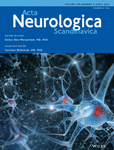A prospective study on gait dominant normal pressure hydrocephalus
Funding information
This work is funded by the Barrow Neurological Foundation (3032226 to JS).
Abstract
Object
We characterize idiopathic normal pressure hydrocephalus (NPH) following treatment with lumbar puncture (LP) and shunt placement through clinical evaluation and quantitative ProtoKinetics Zeno walkway assessments. We evaluate the symptomology by determining gait characteristics altered by treatment.
Methods
Patients at Barrow Neurological Institute (BNI) who underwent a LP, removing 30-32 mL cerebrospinal fluid) followed by ventriculoperitoneal shunt placement in February 2015 to February 2017 were analyzed for gait impairments. Inclusion in the study required a diagnosis of NPH, no conflicting comorbidities, and pre-LP, post-LP, and 6-month post-shunt assessments. Analyses of gait and balance data recorded by physical therapists and the ProtoKinetics Zeno Walkway at pre-LP, post-LP, and post-shunt were performed.
Results
A total of 28 patients were included and one-way analysis of variance and Tukey-Kramer HSD was performed. Among the 15 clinical assessments, nine were significantly altered. Using the ProtoKinetics Zeno Walkway, 7 out of 10 characteristics recorded were considered significantly different among the three data sets. Furthermore, there were more significant differences between pre-LP assessments and post-shunt assessments in comparison to differences between pre-LP assessments and post-LP assessments.
Conclusions
Our results indicate that certain gait characteristics better fit NPH than others. By focusing on the features that are caused by NPH and alleviated by LP and/or shunt placement, a more definitive NPH diagnosis can be attained. Additionally, our findings confirm a cumulative effect of continuous drainage via shunt placement may lead to increased improvement in NPH symptoms over LP results.
CONFLICT OF INTEREST
Authors report no conflict of interest.




